This link shows dozens of examples of how to design a high quality professional TV for safety on a single Cu layer board for 3kV no damage and fused above this. See if you can spot why they were done this way. ( in grey)Schematic
Galvanic isolation is achieved for DC but at 120 Hz or 100 Hz the CM leakage current is permitted to a SAFE limit of 500uA worst case, while it's main purpose is shunting high dV/dt noise to a lower common mode impedance to reduce emanations and crosstalk when using isolated ac-dc SMPS with many external HDMI connections.
These are important safety caps that are line to ground rated for voltage called Y caps. X caps are line to line.
When does capacitor reliability become critical to safety?
Line filter capacitors are classified either as X-capacitors or
Y-capacitors. X-capacitors are connected between line and neutral, to
protect against differential mode interference. Their failure does not
create conditions for dangerous electric shock, although it can create
a fire risk. However Y-capacitors are designed to filter out
common-mode noise, and are connected between line and chassis; if they
short-circuit, they create a risk of shock to the user.
How are Y-Capacitors designed and deployed to ensure safety?
Y-capacitors are designed to enhanced electrical and mechanical
reliability standards. Capacitance values are also limited to reduce
the current passing through the capacitor when AC voltage is applied,
and reduce the energy stored to a safe limit when DC voltage is
applied. Capacitors must be tested to applicable standards to qualify
them for use as Y-capacitors.
Which European standards are applicable?
The EN 132400 Standard was issued on 26 June, 1995 replacing all the
European National Standards in force up to that date. This was
identical to the International Standard IEC 60384-14 2nd Edition 1993.
Since then, to make CENELEC and IEC standards identical in name as
well as specification, the European Standard EN 132400 has been
superseded by EN 60384-14 that is identical to the International
Standard IEC 60384-14. Any European national body can issue approvals,
with validity recognized by the bodies of all the other CENELEC member
countries with no need to repeat the tests.
http://powerblog.vicorpower.com/2013/06/what-are-y-capacitors/
You can learn much more about Electronic Design by studying the service manual schematics and layouts of high end quality companies like Sharp and in this case your TV service manual.
Note how the reference designators of all,X caps are CXxxxx and Y caps are CYxxxx and that there are many for different purposes.
The ones you show, are not (as might be thinking) for the input rectifier Line "Pi" LC filter Y caps , but rather the DC chassis to AC Common mode ground. See bottom in column 15.

Also note the Safety information below , which is direct result of these X and Y caps.




